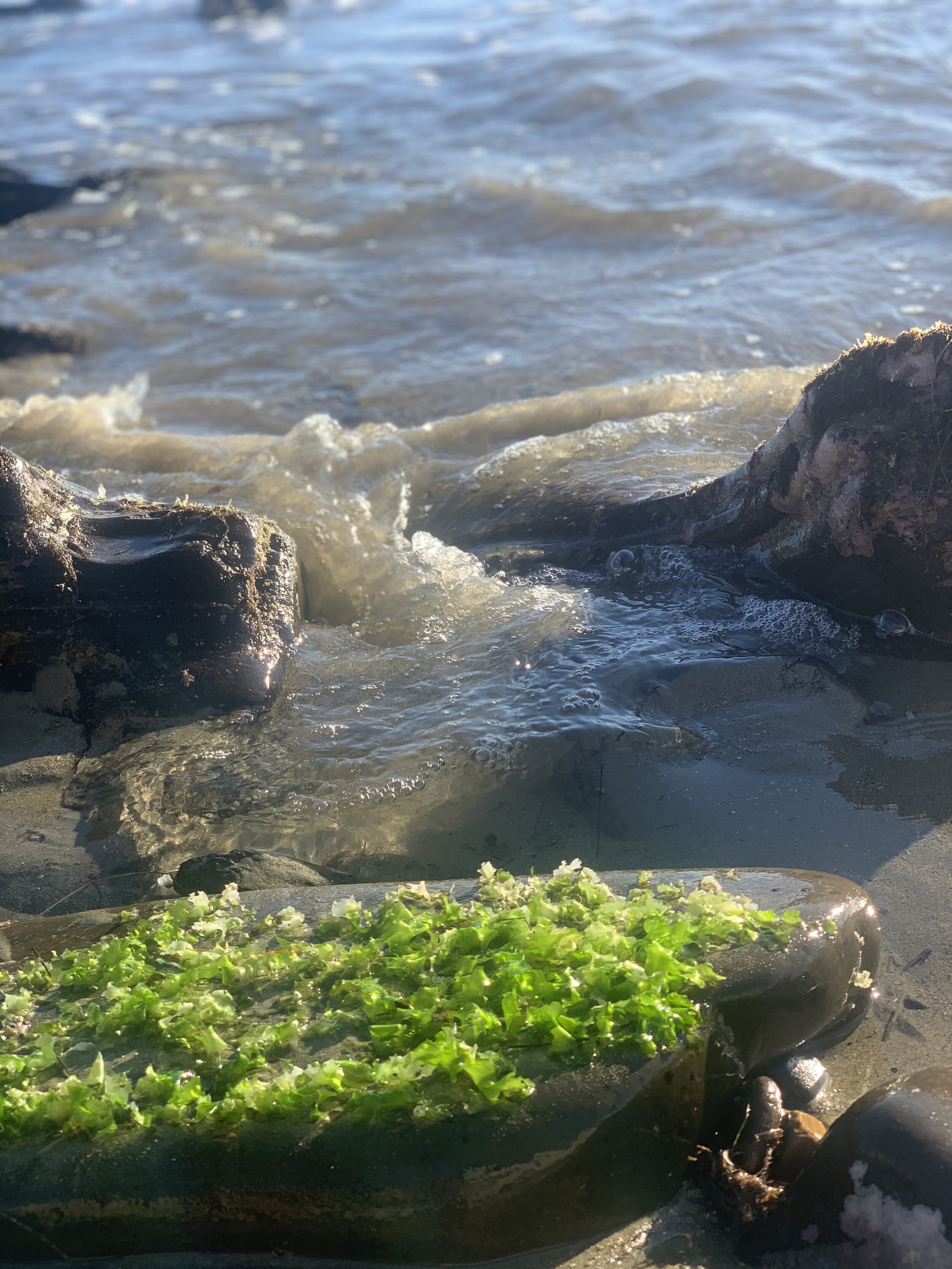Coastal Foraging- The Basics
“Seaweeds are to the sea what forests, undergrowth, bushes and groundcover are to the land. They produce oxygen and release it into their surroundings while at the same time functioning as a physical structure that provides a habitat for a wealth of organisms.” Ole Mouritson
Last weekend the low tide was in the early afternoon, so my partner and I spent two days with our bare feet in the sand, beach foraging for seaweed, shellfish and treasures. The Gaviota Coast is a very diverse stretch of beach with high cliffs and awe inspiring rock formations. When the tide is high, the beach is small and cozy, but as the tide recedes the coastline opens up and the beach seems endless with colorful shells and seaweed littering the sand, and starfish and mussels clinging to now visible rocks.
Brown Seaweed: Kelp
My primary interest was to find and identify various seaweeds. I’m taking an herbs course and recently learned how extremely nutritious and beneficial seaweed is. Here are a few fun facts about seaweed:
There are over 10,000 different species and it has been around for 300 billion years- wow! Although seaweeds are basically weeds of the sea, they aren’t technically plants, but marine algae. Their value nutritionally is very important and contain high levels of iodine, omega 3’s, magnesium, calcium,, potassium, iron, fiber and vitamin C to name a few. Seaweed contains both soluble and insoluble fiber, both of which are crucial for our health.
When harvesting seaweed, or any wild plant, it must be approached ethically and you should always check to see if a permit is needed. One of the easiest to harvest and most abundant seaweed on the beach is kelp. Most people say that this is also their favorite to eat. I will reserve my opinion until I have tried more types. Seaweed is classified into 3 groups: brown, red and green. Kelp is of the brown variety and is one of the highest in iodine and magnesium- two of the minerals the majority of the population is deficient in. An iodine deficiency can lead to hypothyroidism, which seems to be on the rise amongst some women I know. Magnesium is becoming increasingly harder to get into our diet as it becomes less available in our soil, which means we have less of it in our food.
Green Seaweed: Sea Lettuce
I plan to make a Sea Zest Seasoning using kelp, sesame seeds and nettle after I dry my kelp. Another way to get the benefits of kelp would be to take a seaweed bath. Simply put some dried seaweed into a mesh bag and plop in your tub. I like to add some epsom salts and essential oils, too for all of the nourishing benefits at once.
While we were at the beach gathering seaweed, we couldn’t help but notice the large amount of mussels. Our curiosity peaked, we did some careful research about when and how to forage wild mussels. We found that we are well within mussel season so we decided to hit the beach the following day.
Here’s what we learned:
Only eat wild mussels from November to April- the other 6 months there is a quarantine due to potential paralytic shellfish poisoning. This doesn’t sound like something I want to mess with, how about you??
Bring your fishing permit, if you have one, or go get a one day permit.
You can collect 10 pounds per person per day.
You only need gloves to pull the mussels from the rocks, (although I was able to pull a few off with my bare hands, as I forgot my gloves)
Always double check with CA Department of Fish and Wildlife that there haven’t been any changes to the quarantine in your area.
Cooking Wild Mussels
I’m happy to report that foraging mussels was easy and delicious. I made a simple broth of white wine, garlic, Serrano peppers and boiled the cleaned mussels until they opened- about 10 minutes- then served with fresh chopped Cilantro. If you love to forage and eat wild food, this is a great day trip if you can get to the coast. Otherwise, here are some good, reputable, hand harvest seaweed suppliers: Mountain Rose Herbs, Ryan Drum or BC Kelp.
I’m certainly no expert and love to learn as I go and experiment along the way. Thanks for taking this journey with me into the wide world of nourishing, medicinal and incredibly beautiful food right outside our doors.





